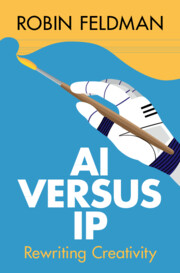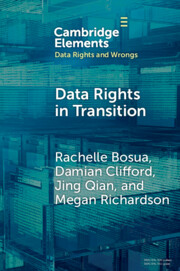Refine search
Actions for selected content:
48533 results in Computer Science
ROB volume 43 issue 7 Cover and Front matter
-
- Article
-
- You have access
- Export citation
Predicting concrete strength using machine learning and fresh-state measurements
-
- Journal:
- Data-Centric Engineering / Volume 6 / 2025
- Published online by Cambridge University Press:
- 13 August 2025, e37
-
- Article
-
- You have access
- Open access
- HTML
- Export citation
Dialogue-based computer-assisted language learning systems for second language speaking development: A three-level meta-analysis – ADDENDUM
-
- Journal:
- ReCALL , First View
- Published online by Cambridge University Press:
- 13 August 2025, p. 1
-
- Article
-
- You have access
- Open access
- HTML
- Export citation
Hitting probabilities of constrained random walks representing tandem networks
-
- Journal:
- Probability in the Engineering and Informational Sciences , First View
- Published online by Cambridge University Press:
- 13 August 2025, pp. 1-56
-
- Article
-
- You have access
- Open access
- HTML
- Export citation
Autonomous unmanned aerial vehicles exploration for semantic indoor reconstruction using 3D Gaussian splatting
- Part of
-
- Journal:
- Data-Centric Engineering / Volume 6 / 2025
- Published online by Cambridge University Press:
- 13 August 2025, e38
-
- Article
-
- You have access
- Open access
- HTML
- Export citation
Measuring joint attention in co-creation through automatic human activity recognition
-
- Journal:
- Design Science / Volume 11 / 2025
- Published online by Cambridge University Press:
- 12 August 2025, e33
-
- Article
-
- You have access
- Open access
- HTML
- Export citation
Embedding nearly spanning trees
- Part of
-
- Journal:
- Combinatorics, Probability and Computing , First View
- Published online by Cambridge University Press:
- 11 August 2025, pp. 1-5
-
- Article
- Export citation
Digital Dybbuks and virtual Golems: the ethics of digital duplicates in Holocaust testimony
- Part of
-
- Journal:
- Memory, Mind & Media / Volume 4 / 2025
- Published online by Cambridge University Press:
- 11 August 2025, e10
-
- Article
-
- You have access
- Open access
- HTML
- Export citation
Turbine location-aware multi-decadal wind power predictions for Germany using CMIP6
- Part of
-
- Journal:
- Environmental Data Science / Volume 4 / 2025
- Published online by Cambridge University Press:
- 11 August 2025, e38
-
- Article
-
- You have access
- Open access
- HTML
- Export citation
A survey to investigate approaches, methods, contents and objectives in education for sustainable design
-
- Journal:
- Design Science / Volume 11 / 2025
- Published online by Cambridge University Press:
- 11 August 2025, e32
-
- Article
-
- You have access
- Open access
- HTML
- Export citation
A stability theorem for multi-partite graphs
- Part of
-
- Journal:
- Combinatorics, Probability and Computing , First View
- Published online by Cambridge University Press:
- 11 August 2025, pp. 1-27
-
- Article
- Export citation
A conditional lower bound for the Turán number of spheres
- Part of
-
- Journal:
- Combinatorics, Probability and Computing , First View
- Published online by Cambridge University Press:
- 11 August 2025, pp. 1-9
-
- Article
-
- You have access
- Open access
- HTML
- Export citation
Convergence of the QuickVal residual
- Part of
-
- Journal:
- Combinatorics, Probability and Computing , First View
- Published online by Cambridge University Press:
- 11 August 2025, pp. 1-23
-
- Article
-
- You have access
- Open access
- HTML
- Export citation

AI versus IP
- Rewriting Creativity
-
- Published online:
- 09 August 2025
- Print publication:
- 28 August 2025

The Cambridge Handbook of Generative AI and the Law
-
- Published online:
- 08 August 2025
- Print publication:
- 07 August 2025

Data Rights in Transition
-
- Published online:
- 08 August 2025
- Print publication:
- 04 September 2025
-
- Element
- Export citation
Memory and anxiety: A sociocultural approach: Introduction to the Special Collection
- Part of
-
- Journal:
- Memory, Mind & Media / Volume 4 / 2025
- Published online by Cambridge University Press:
- 08 August 2025, e9
-
- Article
-
- You have access
- Open access
- HTML
- Export citation
MODULAR SEQUENT CALCULI FOR INTERPRETABILITY LOGICS
- Part of
-
- Journal:
- The Review of Symbolic Logic / Volume 18 / Issue 3 / September 2025
- Published online by Cambridge University Press:
- 08 August 2025, pp. 704-743
- Print publication:
- September 2025
-
- Article
- Export citation




































